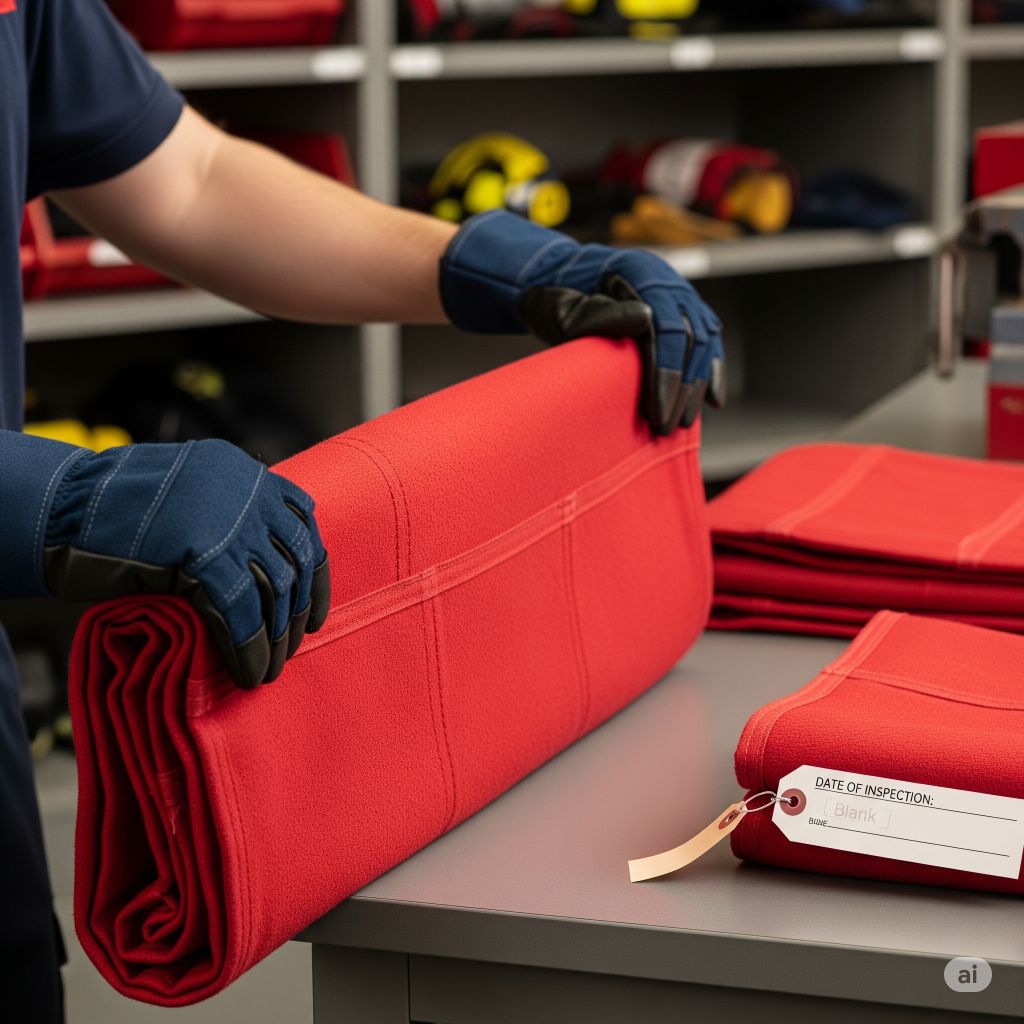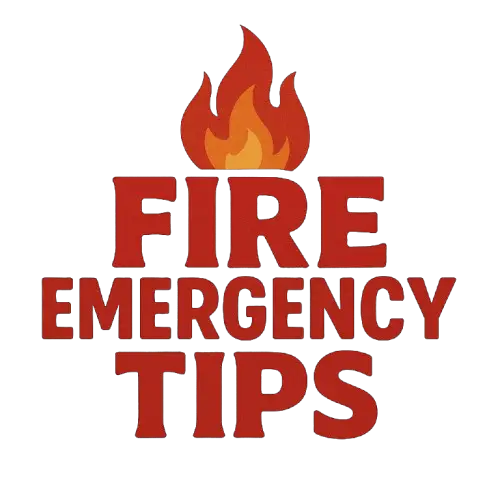
Fire blankets are a common safety tool, but have you ever wondered if they can actually catch fire themselves? In this article, I’ll delve into the question of whether a fire blanket can ignite and add to the flames during an emergency. Let’s separate fact from fiction and explore the effectiveness of these firefighting essentials.
As a seasoned blogger in the safety and emergency preparedness niche, I’ve received numerous inquiries about the reliability of fire blankets. It’s crucial to understand the potential risks associated with these safety devices to make informed decisions during a fire outbreak. Join me as I uncover the truth behind whether a fire blanket is truly fireproof or if it poses a hidden danger in critical situations.
Key Takeaways
- Fire blankets are typically made of fiberglass or fire-resistant treated wool, chosen for their ability to resist flames and withstand high temperatures.
- The quality and thickness of materials used in fire blankets significantly impact their ability to smother fires effectively.
- Thorough testing of fire blankets for fire resistance is crucial, ensuring they do not catch fire and can safely extinguish flames.
- Fire blankets are designed to withstand high temperatures and smother fires by cutting off the oxygen supply, but there is a possibility of them catching fire under extreme conditions.
- Not all fire blankets are the same in terms of fire resistance; it is important to choose high-quality ones that meet recognized safety standards.
- Fire blankets can be effective for various types of fires, not just small fires, including kitchen fires and clothing fires.
Exploring the Construction of Fire Blankets
When it comes to fire blankets, understanding their construction is crucial. Fire blankets are typically made of fiberglass or wool that has been treated with fire-resistant chemicals. These materials are chosen for their ability to withstand high temperatures and resist flames.
- Fiberglass fire blankets: Made from woven fiberglass fabric, these blankets are lightweight and durable. They can withstand temperatures up to 1000°F.
- Wool fire blankets: Wool is naturally fire-resistant and can smother small fires by cutting off the oxygen supply.
The construction of fire blankets plays a significant role in their effectiveness in smothering fires. The thickness and quality of the materials used determine how well the blanket can insulate and block heat.
In an emergency, having a fire blanket made of high-quality materials can make a difference. Always check the label to ensure the blanket meets safety standards and is suitable for the type of fires you may encounter.
Understanding the Materials Used in Fire Blankets
When it comes to fire blankets, the materials used play a crucial role in their effectiveness. Fiberglass and fire-resistant treated wool are the two primary materials utilized in the construction of fire blankets.
- Fiberglass:
- Lightweight and durable
- Can withstand temperatures up to 1000°F
- Fire-Resistant Treated Wool:
- Naturally fire-resistant
- Smothers small fires by cutting off oxygen supply
The quality and thickness of these materials significantly impact the fire blankets’ ability to smother fires. Therefore, it’s vital to ensure that the materials meet safety standards and are suitable for the specific types of fires one may encounter in an emergency.
Testing the Fire Resistance of Fire Blankets
When it comes to fire safety, testing the fire resistance of fire blankets is crucial. Fire blankets are designed to extinguish fires by cutting off the oxygen supply, but can they catch fire themselves? To ensure their effectiveness in emergencies, thorough testing is essential.
In controlled environments, fire blankets are subjected to flame exposure to assess their fire resistance. This testing involves exposing the blanket to a standard flame source to determine if it ignites. Certification standards such as EN 1869:1997 provide guidelines for these tests, ensuring that fire blankets meet safety requirements.
During testing, the ignition time of the fire blanket is monitored to evaluate its reaction to fire. A high-quality fire blanket should not catch fire or should have a significantly delayed ignition time, allowing it to safely smother flames.
Efficient fire blankets are constructed using materials that are fire-resistant and have been tested to withstand high temperatures. By verifying the fire resistance of fire blankets, we can trust in their ability to safely extinguish fires without compromising our safety.
Testing the fire resistance of fire blankets is a critical step in ensuring their reliability during emergencies and underlines the importance of using quality-tested products for effective fire protection.
Examining Real-Life Scenarios: Can Fire Blankets Catch Fire?
In real-life scenarios, the critical question often arises: Can fire blankets actually catch fire? This concern is valid, considering the necessity for these safety tools to resist flames when extinguishing fires. Understanding the behavior of fire blankets in the face of fire is crucial for ensuring their reliability and effectiveness.
In controlled tests, fire blankets undergo rigorous examination to determine their fire resistance levels, assessing factors such as ignition time and reaction to flames. It is essential to note that high-quality fire blankets are designed to withstand intense heat without catching fire themselves. These products are engineered to smother flames by cutting off the fire’s oxygen supply.
Despite their ability to endure high temperatures, the possibility of fire blankets catching fire remains present under certain extreme conditions. However, this is a rare occurrence and usually happens when exposed to exceptionally intense and sustained heat that surpasses their intended capabilities.
By comprehensively examining real-life scenarios and considering the testing standards in place, we can gain a better understanding of the capabilities and limitations of fire blankets in handling fires. This knowledge empowers us to make informed decisions when choosing appropriate safety equipment for fire protection needs.
Debunking Myths and Confirming Facts About Fire Blankets
When it comes to fire safety equipment like fire blankets, there are several misconceptions that need to be addressed. Let’s debunk some myths and confirm the facts:
- Myth: Fire blankets are immune to catching fire.
- Fact: While fire blankets are designed to withstand high temperatures, they can catch fire under extreme conditions.
- Myth: All fire blankets are the same in terms of fire resistance.
- Fact: Not all fire blankets are created equal. It’s crucial to choose high-quality fire blankets that meet recognized safety standards.
- Myth: Fire blankets are only effective for small fires.
- Fact: Fire blankets can be effective for various types of fires, including kitchen fires and clothing fires.
It’s essential to understand the capabilities and limitations of fire blankets to ensure your safety in case of a fire emergency.
Conclusion
Fire blankets are essential tools for fire safety, offering protection in various emergency situations. While they are designed to withstand high temperatures, it’s important to note that they can still catch fire under extreme conditions. Selecting a high-quality fire blanket that meets safety standards is crucial for optimal performance. Despite the misconception that fire blankets are only effective for small fires, they can be used for a wide range of fire types, including kitchen and clothing fires. Understanding the capabilities and limitations of fire blankets is key to ensuring safety and preparedness in the event of a fire emergency.
Frequently Asked Questions
Are fire blankets completely fireproof?
Fire blankets are resistant to high temperatures but can catch fire under extreme conditions.
Do all fire blankets offer the same level of fire resistance?
No, it is crucial to select high-quality fire blankets that adhere to safety standards.
Are fire blankets only effective for small fires?
Fire blankets can be utilized for various types of fires, including kitchen and clothing fires.
